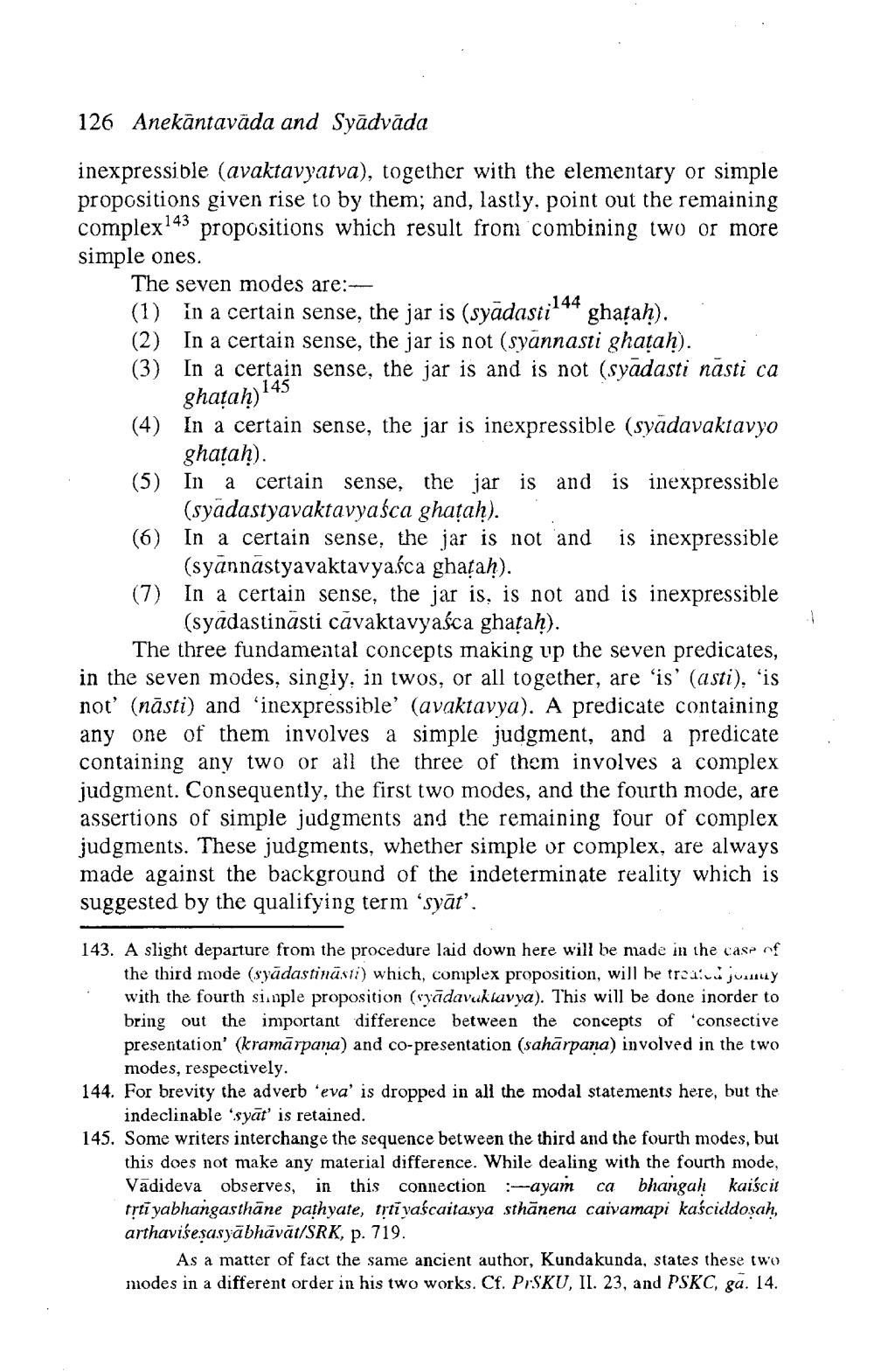________________
126 Anekantavāda and Syādvāda
inexpressible (avaktavyatva), together with the elementary or simple propositions given rise to by them; and, lastly, point out the remaining complex143 propositions which result from combining two or more simple ones.
The seven modes are: (1) in a certain sense, the jar is (syādasti 44 ghatah). (2) In a certain sense, the jar is not (syānnasti ghatah). (3) In a certain sense, the jar is and is not (syādasti násti ca
ghațah)145
(4) In a certain sense, the jar is inexpressible (syadavaktavyo
ghatah). In a certain sense, the jar is and is inexpressible
(syadastyavaktavyaśca gharah). (6) In a certain sense, the jar is not and is inexpressible
(syannastyavaktavyaśca ghatah). (7) In a certain sense, the jar is, is not and is inexpressible
(syadastinasti cavaktavyaśca ghataḥ). The three fundamental concepts making up the seven predicates, in the seven modes, singly, in twos, or all together, are 'is' (asti), 'is not' (năsti) and 'inexpressible' (avaktavya). A predicate containing any one of them involves a simple judgment, and a predicate
ning any two or all the three of them involves a complex judgment. Consequently, the first two modes, and the fourth mode, are assertions of simple judgments and the remaining four of complex judgments. These judgments, whether simple or complex, are always made against the background of the indeterminate reality which is suggested by the qualifying term “syāt'.
143. A slight departure from the procedure laid down here will be made in the case of
the third mode (syādastināsii) which, complex proposition, will be trajumu with the fourth sinple proposition (vyādavuklavya). This will be done inorder to bring out the important difference between the concepts of 'consective presentation' (kramārpana) and co-presentation (sahārpana) involved in the two
modes, respectively. 144. For brevity the adverb 'eva' is dropped in all the modal statements here, but the
indeclinable 'syāt' is retained. 145. Some writers interchange the sequence between the third and the fourth modes, but
this does not make any material difference. While dealing with the fourth mode, Vadideva observes, in this connection ayam ca bhangah kaiści trtiyabhangasthāne pathyate, trti vascaitasya sthānena caivamapi kaściddosah, arthaviśesasyābhāvāt/SRK, p. 719.
As a matter of fact the same ancient author, Kunda kunda, states these two modes in a different order in his two works. Cf. PrSKU, II. 23, and PSKC, ga. 14.




